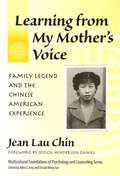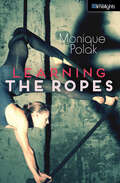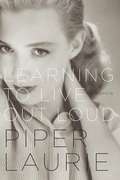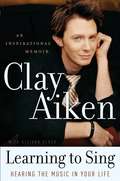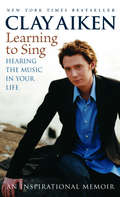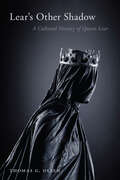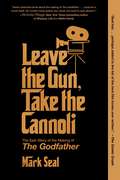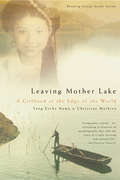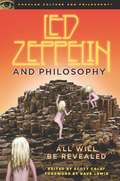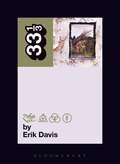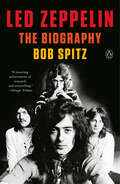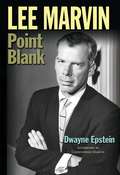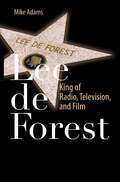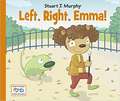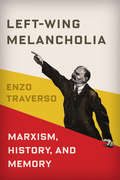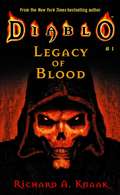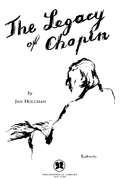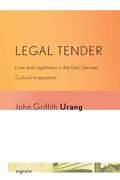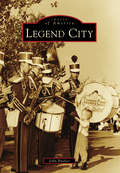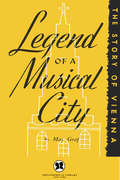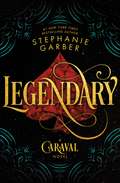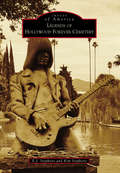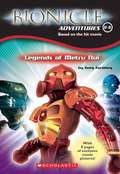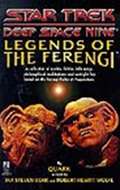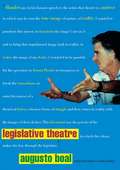- Table View
- List View
Learning from My Mother's Voice: Family Legend and the Chinese American Experience
by Jean Lau Chin"As the reader takes Jean Lau Chin's guided tours through myth and cultural history, it is clear that these stories are more than entertainment: They represent cultural messages about living as a woman. The juxtaposition of Chinese and Western myths with their similarities and differences, followed by the author's incisive analysis of contemporary stories depicting Asian women in print and on the screen, provide culturally driven connections to perceptions and behaviors of Chinese women both individually and in relation to the world. Through these stories, a rich tapestry of information about Chinese women and Chinese American women emerges. The stereotypical Chinese woman fails to appear as the various lenses of ethnicity, gender, location, and epoch make explicit the diversity that exists within any ethnic group and liberate us by providing an informed array of images and possibilities." From Book
Learning the Ropes (Orca Limelights)
by Monique PolakMandy dreams of a career in the circus, working as an aerialist who specializes in rope climbing. When Mandy is accepted into the prestigious Montreal Circus College summer program, she feels that she is finally on her way to fulfilling her dreams. At circus camp she is befriended—and challenged—by young circus performers from around the world. Circus camp turns out to be a magical combination of work and play, but when a veteran aerialist is killed in a fall, Mandy must confront the reality of circus life. This short novel is a high-interest, low-reading level book for middle-grade readers who are building reading skills, want a quick read or say they don’t like to read!
Learning to Live Out Loud: A Memoir
by Piper LaurieAn intimate memoir by three-time Oscar nominee Piper Laurie, one of Hollywood's most gifted and respected actressesAt the age of seventeen, in the glory days of movie-making, Piper Laurie was living every little girl's dream. Having been selected by Universal Studios to be a contract star, Piper was removed from her acting class and provided with stylists, chaperones, leading roles, and handsome dates, and elevated to the heights of Hollywood. Her beauty was admired by the likes of Ronald Reagan, Howard Hughes, Paul Newman, Tony Curtis, as well as dozens of directors and legions of fans. Her name was emblazoned on marquees across America for hit movies of the fifties such as the The Prince Who Was a Thief, The Mississippi Gambler, and Ain't Misbehavin'. But Piper discovered early on that the little girl's dream was not her own. Mortified by the shallowness of the roles and movies she was given, she longed for the freedom and fulfillment of her own artistic vision. After years in the studio system, shy Piper Laurie found her voice and the courage to burn her contract. It was only after she left the oppressive studio culture that she began to star in the TV shows, plays, and films that truly became the hallmarks of her career: The Glass Menagerie on Broadway, the original Days of Wine and Roses, The Hustler, the iconic Carrie, and Twin Peaks. She grew into a three-time Oscar-nominated actress, an accomplished sculptor, and a director. This memoir is the inspiring tale of Piper's perseverance to break from tradition and to practice her craft at the highest level. She started life as a withdrawn, mute child who couldn't find her voice and was transformed into a woman who learned to live out loud by her own rules.From the Hardcover edition.
Learning to Sing
by Clay AikenIn Learning to Sing, Clay Aiken tells the story of how his faith was integral to him learning valuable life lessons during his meteoric rise from life as an aspiring educator in Raleigh, North Carolina to instant stardom on "American Idol." Clay's advice is 1) Believe in yourself, 2) Believe in God, and 3) Be really stubborn. This personal relationship with God is key to personal success, as Clay has witnessed in real life experiences. When asked to "dirty up" his lyrics to increase sales, he resisted-and has sold more than 3 million albums. He refuses to make videos placing him in inappropriate situations, and considers his relationship with God the most valuable in his life. Learning to Sing is an account of Clay Aiken's extraordinary faith and will and perseverance, and an inspiring memoir by someone who became-against all odds-one of the biggest pop stars of his time.
Learning to Sing: Hearing the Music in Your Life: An Inspirational Memoir
by Clay AikenIn Learning to Sing, Clay Aiken tells the story of how his faith was integral to him learning valuable life lessons during his meteoric rise from life as an aspiring educator in Raleigh, North Carolina to instant stardom on "American Idol. " Clay's advice is 1) Believe in yourself, 2) Believe in God, and 3) Be really stubborn. This personal relationship with God is key to personal success, as Clay has witnessed in real life experiences. When asked to "dirty up" his lyrics to increase sales, he resisted -- and has sold more than 3 million albums. He refuses to make videos placing him in inappropriate situations, and considers his relationship with God the most valuable in his life. Learning to Sing is an account of Clay Aiken's extraordinary faith and will and perseverance, and an inspiring memoir by someone who became -- against all odds -- one of the biggest pop stars of his time.
Lear’s Other Shadow: A Cultural History of Queen Lear
by Thomas G. OlsenLear’s Other Shadow: A Cultural History of Queen Lear offers a deep cultural analysis of the figure of Queen Lear, who shadows and eventually sometimes overshadows her royal husband across the nearly one-thousand-year life of this archetypal tale. What appears to be a deliberate strategy of suppression, even erasure in Shakespeare’s King Lear later inspired dozens of stage, page, and cinematic remakes and adaptations in which this figure is revived or remembered, often pointedly so. From Jacob Gordin’s Yiddish-language Miriele Efros (1898), through edgy stage remakes such as Gordon Bottomley’s King Lear’s Wife (1915) and the Women’s Theatre Group’s Lear’s Daughters (1987), to novelized retellings from Jane Smiley’s A Thousand Acres (1991) to Preti Taneja’s We That Are Young (2018) and J. R. Thorp’s Learwife (2021), and even the television series Empire (2015–2020) and Succession (2018–2023), Queen Lear regularly emerges from her shadowy origins to challenge how we understand the ancient King Leir/King Lear story. These and many other examples reveal fascinating patterns of adaptation and reinterpretation that Lear's Other Shadow identifies and analyzes for the first time, showing how and why Queen Lear is at the center of this ancient story, whether she is heard from or not.
Leave the Gun, Take the Cannoli: The Epic Story of the Making of The Godfather
by Mark SealThis &“wickedly pacey page-turner&” (Total Film) unfurls the behind-the-scenes story of the making of The Godfather, fifty years after the classic film&’s original release.The story of how The Godfather was made is as dramatic, operatic, and entertaining as the film itself. Over the years, many versions of various aspects of the movie&’s fiery creation have been told—sometimes conflicting, but always compelling. Mark Seal sifts through the evidence, has extensive new conversations with director Francis Ford Coppola and several heretofore silent sources, and complements them with colorful interviews with key players including actors Al Pacino, James Caan, Talia Shire, and others to write &“the definitive look at the making of an American classic&” (Library Journal, starred review). On top of the usual complications of filmmaking, the creators of The Godfather had to contend with the real-life members of its subject matter: the Mob. During production of the movie, location permits were inexplicably revoked, author Mario Puzo got into a public brawl with an irate Frank Sinatra, producer Al Ruddy&’s car was found riddled with bullets, men with &“connections&” vied to be in the cast, and some were given film roles. As Seal notes, this is the tale of a &“movie that revolutionized filmmaking, saved Paramount Pictures, minted a new generation of movie stars, made its struggling author Mario Puzo rich and famous, and sparked a war between two of the mightiest powers in America: the sharks of Hollywood and the highest echelons of the Mob.&” &“For fans of books about moviemaking, this is a definite must-read&” (Booklist).
Leaving Mother Lake: A Girlhood at the Edge of the World
by Yang Erche Namu Christine MathieuLeaving Mother Lake is the extraordinary story of Yang Erche Namu - a girl growing up in the borderlands between Tibet and China, who left her remarkable childhood behind for the bright lights of Shanghai and singing stardom. Namu's home is in an area so primitive that during the Cultural Revolution the Red Guards arrived and left because there was nothing to destroy. When Namu was a small child, her mother tried to give her away three times because she would not stop crying. Each time she was returned. As she grew up, she clashed repeatedly with her equally fierce mother until the arrival of a Chinese official, looking for talented singers. Namu was selected for a singing competition in the nearest city - eight hours away - which, to her astonishment, she won. She realised she had a taste for the outside world and, despite her mother's protestations, she decided to run away Leaving Mother Lake is the lyrical story of the girl who grew out of her rural beginnings, battling against the odds to achieve extraordinary success.
Led Zeppelin and Philosophy: All Will Be Revealed
by Scott CalefLed Zeppelin has long been one of the legends of rock, massively successful both commercially and critically. While there are many books about the band, this is the first to plumb the philosophical depths of the creators of "Stairway to Heaven".
Led Zeppelin's Led Zeppelin IV (33 1/3 #17)
by Erik DavisStripping their famous name off the record was Led Zeppelin’s almost petulant attempt to let their Great Work stand on its own two feet. But the wordless jacket also lent the album charisma. Fans hunted for hidden meanings, or, in failing to find them, sensed a strange reflection of their own mute refusal to communicate with the outside world. This helped to create one of the supreme paradoxes of rock history: an esoteric megahit, a blockbuster arcanum....
Led Zeppelin: The Biography
by Bob Spitz&“In this authoritative, unsparing history of the biggest rock group of the 1970s, Spitz delivers inside details and analysis with his well-known gift for storytelling.&” —PEOPLEFrom the author of the iconic, bestselling history of The Beatles, the definitive account of arguable the greatest rock band of all time.Rock star. Whatever that term means to you, chances are it owes a debt to Led Zeppelin. No one before or since has lived the dream quite like Jimmy Page, Robert Plant, John Paul Jones, and John Bonham. In Led Zeppelin, Bob Spitz takes their full measure, separating myth from reality with his trademark connoisseurship and storytelling flair.From the opening notes of their first album, the band announced itself as something different, a collision of grand artistic ambition and brute primal force, of English folk music and African American blues. Spitz&’s account of their artistic journey, amid the fascinating ecosystem of popular music, is irresistible. But the music is only part of the legend: Led Zeppelin is also the story of how the sixties became the seventies, of how innocence became decadence, of how rock took over. Led Zeppelin wasn&’t the first band to let loose on the road, but as with everything else, they took it to an entirely new level. Not all the legends are true, but in Spitz&’s careful accounting, what is true is astonishing and sometimes disturbing.Led Zeppelin gave no quarter, and neither has Bob Spitz. Led Zeppelin is the long-awaited full reckoning the band richly deserves.
Lee Marvin
by Dwayne EpsteinThe first full-length, authoritative, and detailed story of the iconic actor's life to go beyond the Hollywood scandal-sheet reporting of earlier books, this account offers an appreciation for the man and his acting career and the classic films he starred in, painting a portrait of an individual who took great risks in his acting and career. Although Lee Marvin is best known for his icy tough guy roles—such as his chilling titular villain in The Man Who Shot Liberty Valance or the paternal yet brutally realistic platoon leader in The Big Red One—very little is known of his personal life; his family background; his experiences in WWII; his relationship with his father, family, friends, wives; and his ongoing battles with alcoholism, rage, and depression, occasioned by his postwar PTSD. Now, after years of researching and compiling interviews with family members, friends, and colleagues; rare photographs; and illustrative material, Hollywood writer Dwayne Epstein provides a full understanding and appreciation of this acting titan’s place in the Hollywood pantheon in spite of his very real and human struggles.
Lee de Forest
by Mike AdamsThe life-long inventor, Lee de Forest invented the three-element vacuum tube used between 1906 and 1916 as a detector, amplifier, and oscillator of radio waves. Beginning in 1918 he began to develop a light valve, a device for writing and reading sound using light patterns. While he received many patents for his process, he was initially ignored by the film industry. In order to promote and demonstrate his process he made several hundred sound short films, he rented space for their showing; he sold the tickets and did the publicity to gain audiences for his invention. Lee de Forest officially brought sound to film in 1919. Lee De Forest: King of Radio, Television, and Film is about both invention and early film making; de Forest as the scientist and producer, director, and writer of the content. This book tells the story of de Forest's contribution in changing the history of film through the incorporation of sound. The text includes primary source historical material, U.S. patents and richly-illustrated photos of Lee de Forest's experiments. Readers will greatly benefit from an understanding of the transition from silent to audio motion pictures, the impact this had on the scientific community and the popular culture, as well as the economics of the entertainment industry.
Left Right Emma! (I See I Learn #9)
by Stuart J. MurphyAfter learning the concept of left and right, Emma leads the class marching band on Grandparents Day.
Left-Wing Melancholia: Marxism, History, and Memory (New Directions in Critical Theory #17)
by Enzo TraversoThe fall of the Berlin Wall marked the end of the Cold War but also the rise of a melancholic vision of history as a series of losses. For the political left, the cause lost was communism, and this trauma determined how leftists wrote the next chapter in their political struggle and how they have thought about their past since. Throughout the twentieth century, argues Left-Wing Melancholia, from classical Marxism to psychoanalysis to the advent of critical theory, a culture of defeat and its emotional overlay of melancholy have characterized the leftist understanding of the political in history and in theoretical critique.Drawing on a vast and diverse archive in theory, testimony, and image and on such thinkers as Karl Marx, Walter Benjamin, Theodor W. Adorno, and others, the intellectual historian Enzo Traverso explores the varying nature of left melancholy as it has manifested in a feeling of guilt for not sufficiently challenging authority, in a fear of surrendering in disarray and resignation, in mourning the human costs of the past, and in a sense of failure for not realizing utopian aspirations. Yet hidden within this melancholic tradition are the resources for a renewed challenge to prevailing regimes of historicity, a passion that has the power to reignite the dialectic of revolutionary thought.
Legacy of Blood
by Richard A. Knaak...and neither Man nor Demon nor Angel will be left unscathed... Norrec Vizharan has become a living nightmare. While on a quest to find magical treasure, the soldier of fortune discovers an artifact beyond his wildest dreams: the ancient armor of Bartuc, the legendary Warlord of Blood. But the mysterious armor soul. Now, pursued by demons who covet the dark armor for their own devices, Norrec must overcome a bloodlust he can scarcely control and learn the truth about his terrifying curse before he is lost to darkness forever... An orginal tale of swords, sorcery, and timeless struggle based on the bestselling, award-winning M-rated electronic game form Blizzard Entertainment. Intended for mature readers.
Legacy of Chopin
by Jan HolcmanChopin's views on all phases of music: pianism, composing, teaching, piano transcriptions, criticism, musical progress, etc.
Legal Tender
by John Griffith UrangTreating films including Leander Hauss/mann's controversial Sonnenalle (1999), Urang (visiting professor of German, Reed College, Portland, Oregon) explores the question of why in so many East German films and novels love trumps the crumbling political culture of the GDR. Citing Niklas Luhmann's Love as Passion: The Codification of Intimacy as a key influence, he examines how the "semantics of love" interact with socialist-realist processes of authoritarianism. While these love stories draw on the Western tradition, they also critique bourgeois romantic love institutions and practices--a metaphor for reunification with West Germany. Annotation ©2011 Book News, Inc. , Portland, OR (booknews. com)
Legend City
by John BuekerConceived and built in the early 1960s by local artist and advertising man Louis E. Crandall, Legend City was an ambitious and star-crossed mid-century attempt to bring a world-class theme park to the Phoenix metropolitan area. Despite daunting financial challenges and an unforgiving Arizona sun, the park managed to survive for two full decades, entertaining countless Arizonans and forging an enduring place for itself in the hearts and minds of local residents. A sad tale of broken dreams and economic failure on the surface, the story of Legend City is actually an exhilarating and fascinating chapter in the cultural history of Arizona.
Legend of A Musical City
by Max GrafLegend of a Musical City - The Story of Vienna by Max Graf is a story of Vienna - the musical center of the world. The author has enjoyed the intimate friendship of the musical stars of the last fifty years in which this book was written. Musical stars such as Bruckner, Brahms, and Richard Strauss. He gives a delightful as well as highly educational story of the development of Austrian music. Max Graf, a composer and music critic, the father of Little Hans, was born October 1, 1873, in Vienna, where he died on June 24, 1958. The son of Joseph Graf, a Jewish writer and editor, he was educated in Vienna and Prague. After 1891 he studied at the law school of the University of Vienna but devoted most of his time to music and it was his intention to become a composer, according to Louis Rose (1986). He finished his legal studies in 1896 but devoted much of his time to music composition and criticism, and regularly took part in meetings of the literary group Jung-Wien. From 1902 to 1938 he taught the history of music and musical aesthetics at the Vienna Academy of Music, where he was appointed professor in 1909. Graf met Sigmund Freud in 1900 and his wife, Olga Graf (born Olga Hoenig), from whom he separated a few years later, was probably a patient of Freud's. Within the psychoanalytic movement he is known for being the father of Little Hans, Herbert Graf, who was born in 1903. It was Max who supplied Freud with the material for his paper The Analysis of a Phobia in a Five-Year Old Boy (1909b). At the end of 1904, he took part in sessions of the Wednesday Psychoanalytic Society and, in December 1907, wrote an essay entitled Methodik der Dichterpsychologie (Methodology of the Psychology of the Poet). In early 1906 Freud wrote a short text on a somewhat unexpected topic, Psycopathische Personen auf der Bhne (Psychopathic Characters on the Stage). The text was never published in German, but Graf, to whom Freud had given the manuscript, kept it and had an English translation published (1942a [1905-1906]). Graf emigrated to the United States in 1938 and taught until 1947 at the New School for Social Research in New York, where, in 1940, he created the first seminars in music criticism. He was a guest professor at the Carnegie Institute of Technology in Pittsburgh and at Temple University in Philadelphia. In 1947 he returned to Austria and taught music criticism at the Mozarteum in Salzburg and elsewhere. In 1953 his autobiography, Jede Stunde war erfllt: Ein halbes Jahrhundert Musik- und Theaterleben (Every Minute Filled: A Half-Century in Music and Theater), was published in Vienna, where he died in 1958.
Legendary: A Caraval Novel (Caraval #2)
by Stephanie GarberNew York Times bestselling author Stephanie Garber’s limitless imagination takes flight once more in the colorful, mesmerizing, and immersive sequel to the bestselling breakout debut Caraval <P><P>A heart to protect. A debt to repay. A game to win.After being swept up in the magical world of Caraval, Donatella Dragna has finally escaped her father and saved her sister Scarlett from a disastrous arranged marriage. The girls should be celebrating, but Tella isn’t yet free. She made a desperate bargain with a mysterious criminal, and what Tella owes him no one has ever been able to deliver: Caraval Master Legend’s true name. <P>The only chance of uncovering Legend’s identity is to win Caraval, so Tella throws herself into the legendary competition once more—and into the path of the murderous heir to the throne, a doomed love story, and a web of secrets…including her sister's. <P>Caraval has always demanded bravery, cunning, and sacrifice. But now the game is asking for more. If Tella can’t fulfill her bargain and deliver Legend’s name, she’ll lose everything she cares about—maybe even her life. But if she wins, Legend and Caraval will be destroyed forever. <P>Welcome, welcome to Caraval...the games have only just begun. <P><b>A New York Times Bestseller</b>
Legends of Hollywood Forever Cemetery
by E. J. Stephens Kim StephensFounded in 1899, scenic Hollywood Forever Cemetery—the only cemetery located within the city of Hollywood—serves as the “permanent home” for many of Hollywood’s most famous (and infamous) characters. Hollywood Forever Cemetery boasts a fascinating history surpassed only by the compelling stories of its famous residents. Behind its iron gates are the graves of Cecil B. DeMille, Rudolph Valentino, Douglas Fairbanks, Carl “Alfalfa” Switzer, Tyrone Power, Nelson Eddy, Marion Davies, Fay Wray, Mel Blanc, Johnny Ramone, Don Adams, Bebe Daniels, Bugsy Siegel, and a host of others whose memorials tell the history of Tinseltown in stone.
Legends of Metru Nui (Bionicle Adventures #4)
by Greg FarshteyAfter their defeat of the Morbuzakh and the shape-shifting Krahka, the Toa Metru expect to be hailed as heroes. Instead, they are betrayed by someone they thought they could trust. Three of the Toa are arrested.
Legends of the Ferengi (Star Trek )
by Ira Steven Behr"Once you have their money, never give it back." -- #1 "Anything worth doing is worth doing for money." -- #13 For centuries these and the other famous Ferengi "Rules of Acquisition' have been the guiding principles of the galaxy's most successful entrepreneurs. But the wisdom behind them was not won without a high cost in lives and latnium. Now at last these inspiring tales of avaricious Ferengi wresting monetary gain from the jaws of poverty are available to the profit-hungry across the galaxy!
Legislative Theatre: Using Performance to Make Politics (Augusto Boal)
by Augusto BoalAugusto Boal's reputation is now moving beyond the realms of theatre and drama therapy, bringing him to the attention of a wider public. Legislative Theatre is the latest and most remarkable stage in his work. 'Legislative Theatre' is an attempt to use Boal's method of 'Forum Theatre' within a political system to create a truer form of democracy. It is an extraordinary experiment in the potential of theatre to affect social change. At the heart of his method of Forum Theatre is the dual meaning of the verb 'to act': to perform and to take action. Forum Theatre invites members of the audience to take the stage and decide the outcome, becoming an integral part of the performance. As a politician in his native Rio de Janeiro, Boal used Forum Theatre to motivate the local populace in generating relevant legislation. In Legislative Theatre Boal creates new, theatrical, and truly revolutionary ways of involving everyone in the democratic process. This book includes: * a full explanation of the genesis and principles of Legislative Theatre * a description of the process in operation in Rio * Boal's essays, speeches and lectures on popular theatre, Paolo Freire, cultural activism, the point of playwrighting, and much else besides.
